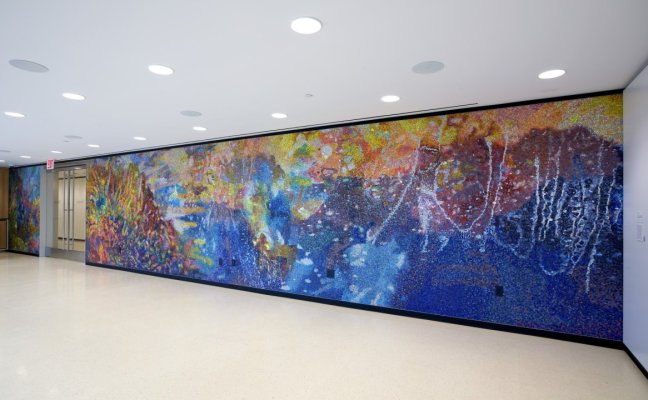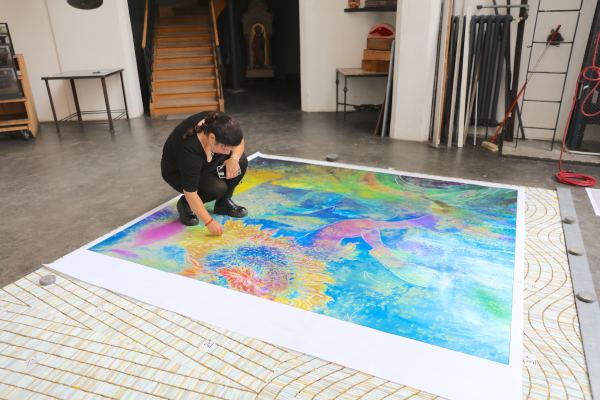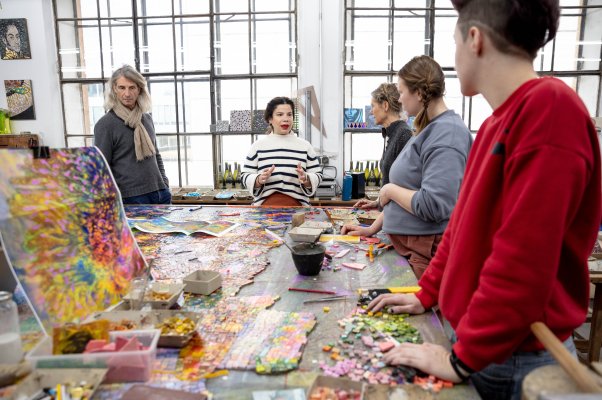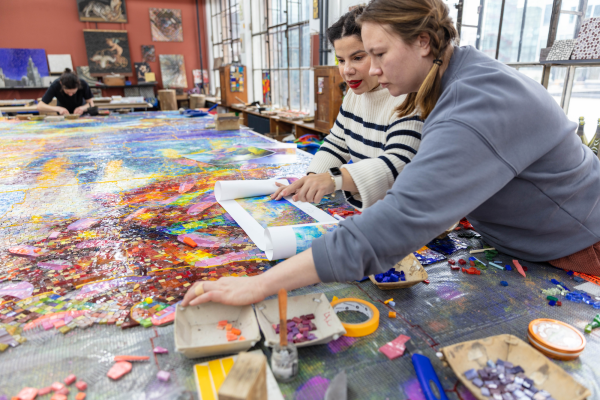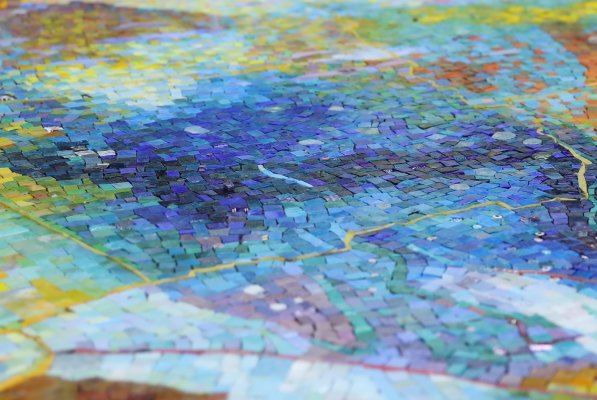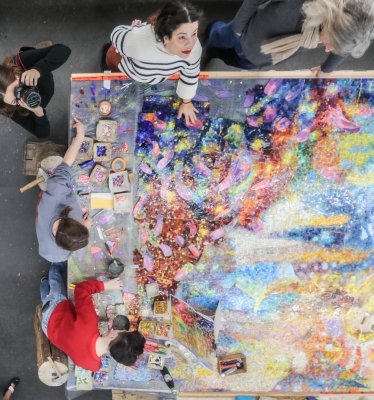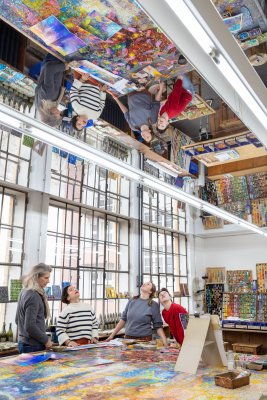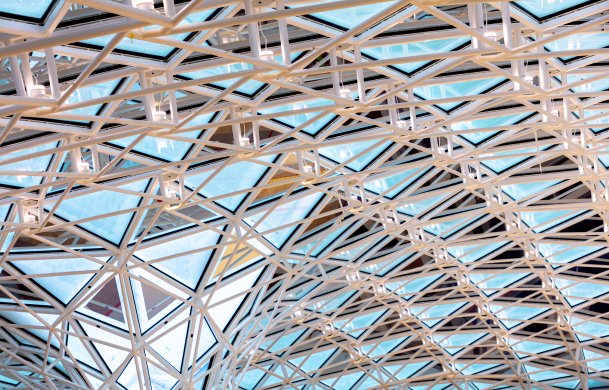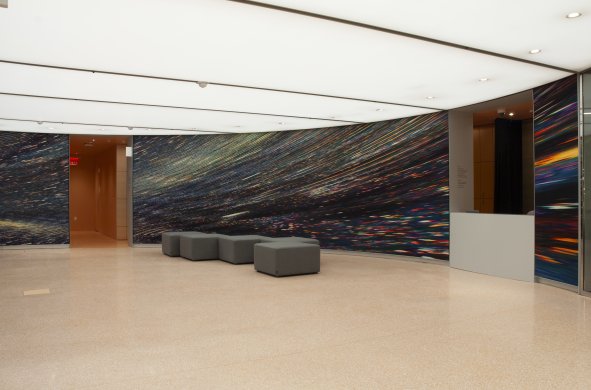About the Artist
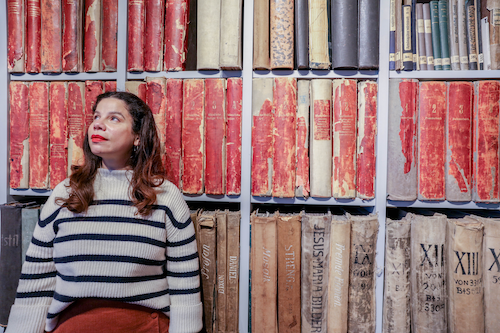 Báez, who was born in the Dominican Republic to Dominican and Haitian parents, and now lives and works in New York City, highlights the fact that no place is neutral, and she offers opportunities for viewers to critically engage with established narratives. For her “the benefit of existing in [the] transverse space” of an Afrolatina immigrant whose experiences, identities, languages, and sense of home have naturally been fluid, has granted her a “certain flexibility and adaptability. You move away from this rigidity of form or understanding of self as singular…”[2] and instead celebrate the complexities and nuances of life. Through her work, she offers idyllic possibilities for the future born from the horrific histories of enslavement, imperialism, and other injustices. She sees art as an opportunity to make memory, history, and mythology more present and real to her viewers.
Báez, who was born in the Dominican Republic to Dominican and Haitian parents, and now lives and works in New York City, highlights the fact that no place is neutral, and she offers opportunities for viewers to critically engage with established narratives. For her “the benefit of existing in [the] transverse space” of an Afrolatina immigrant whose experiences, identities, languages, and sense of home have naturally been fluid, has granted her a “certain flexibility and adaptability. You move away from this rigidity of form or understanding of self as singular…”[2] and instead celebrate the complexities and nuances of life. Through her work, she offers idyllic possibilities for the future born from the horrific histories of enslavement, imperialism, and other injustices. She sees art as an opportunity to make memory, history, and mythology more present and real to her viewers.
Notes
1. Firelei Báez in conversation with Thelma Golden, in Firelei Báez: to breathe full and free, edited by David Norr, with contributions by Carla Acevedo-Yates, Mark Godfrey, Thelma Golden, Eva Respini, Legacy Russell. New York: Gregory R. Miller & Co., 2022, 31.
2. Ibid., 37.
